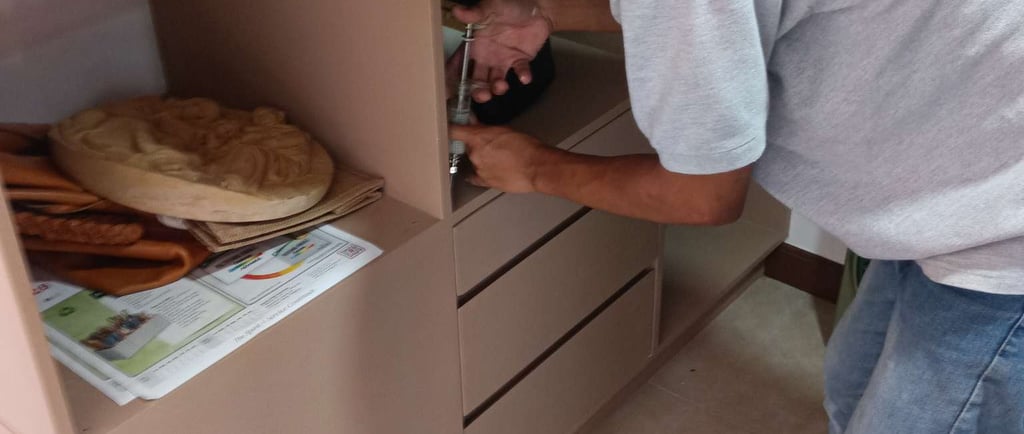Wood Furniture Protection
Understanding wood furniture protection
2 min read


Wood furniture adds warmth and elegance to any home, but it’s also vulnerable to damage from pests like termites, grain beetles, powderpost beetles, and carpenter ants. These tiny invaders can weaken the structure of your furniture, leaving unsightly holes and compromising its durability. Fortunately, with the right preventive measures, you can keep your wood furniture safe and pest-free for years to come.
Common Wood-Damaging Pests
1. Termites– These silent destroyers feed on cellulose in wood, causing severe structural damage. Subterranean and drywood termites are the most common culprits.
2. Grain Beetles & Powderpost Beetles– These beetles lay eggs in wood, and their larvae bore tunnels as they feed, leaving behind tiny exit holes and fine sawdust (frass).
3. Carpenter Ants– Unlike termites, they don’t eat wood but excavate it to build nests, weakening furniture over time.
4. Wood-Boring Weevils– These pests infest damp or decaying wood, accelerating damage in already compromised furniture.
How to Protect Your Wood Furniture
1. Keep Furniture Dry
Moisture attracts pests, especially termites and fungi that soften wood, making it easier for beetles to infest.
- Use a dehumidifier in damp areas.
- Wipe spills immediately and avoid placing furniture in high-humidity zones like basements.
2. Apply Protective Finishes
Sealing wood with varnish, lacquer, or polyurethane creates a barrier against pests.
- Sand and refinish furniture periodically to maintain protection.
- For untreated wood, consider natural oils like linseed or tung oil.
3. Use Pest Repellents
- Boric Acid– Effective against termites and beetles; apply as a powder or solution.
- Diatomaceous Earth– A natural insect killer that damages pests’ exoskeletons.
- Essential Oils– Cedar, neem, and tea tree oils repel insects. Mix with water and spray on furniture.
4. Regular Inspections & Cleaning
- Check for small holes, sawdust, or hollow-sounding wood—signs of infestation.
- Dust and vacuum furniture regularly to remove eggs or larvae.
5. Store Properly
- Avoid storing wood furniture in dark, damp areas.
- Use silica gel packs in drawers to reduce moisture.
6. Professional Pest Control
If infestation is severe, consult an exterminator for targeted treatments like fumigation or heat treatment.
Natural Prevention Tips
- Cedar Blocks– Their natural oils deter moths and beetles.
- Sunlight Exposure– Occasional sunlight helps kill larvae and reduces moisture.
- Vinegar Solution– A mix of white vinegar and water can clean and deter pests.
Final Thoughts
Protecting wood furniture from pests requires vigilance and proactive care. By maintaining a dry environment, using protective finishes, and applying natural repellents, you can preserve your furniture’s beauty and longevity. Regular inspections and prompt action at the first sign of damage will ensure your cherished pieces remain pest-free for generations.
Investing in prevention today saves costly repairs tomorrow—so take these steps to safeguard your wood furniture and enjoy its timeless appeal for years to come!



